The Ashcan School is an informal art group that operated in the late 19th and early 20th centuries. The term Ashcan School was coined by Alfred H. Barr and Holger Cahill in 1934, inspired by a drawing by Bellows with the title Disappointments of the Ash Can which depicts three men examining the contents of an ash can. This group remained known for its works in the manner of urban realism, which brought depictions of urban life of the lower-class New Yorkers. Artists associated with the Ashcan School are Robert Henri, John Sloan, William James Glackens, George Luks, Everett Shinn, George Bellows, Jerome Myers.
Notable Ashcan School Artwork
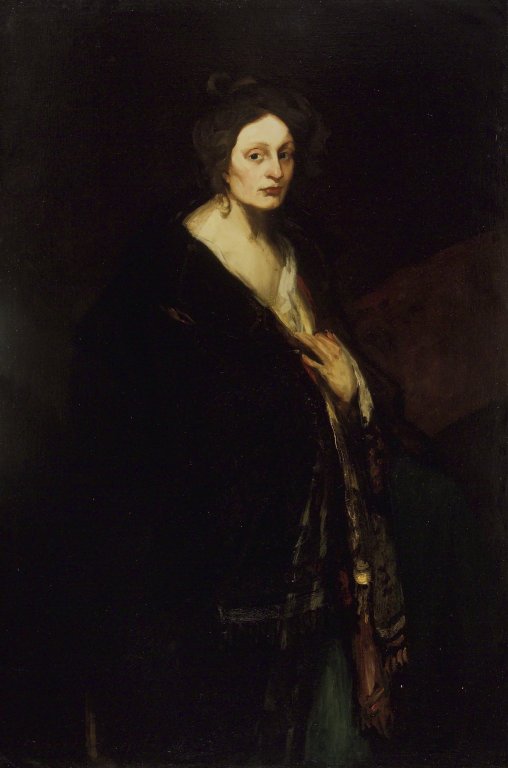
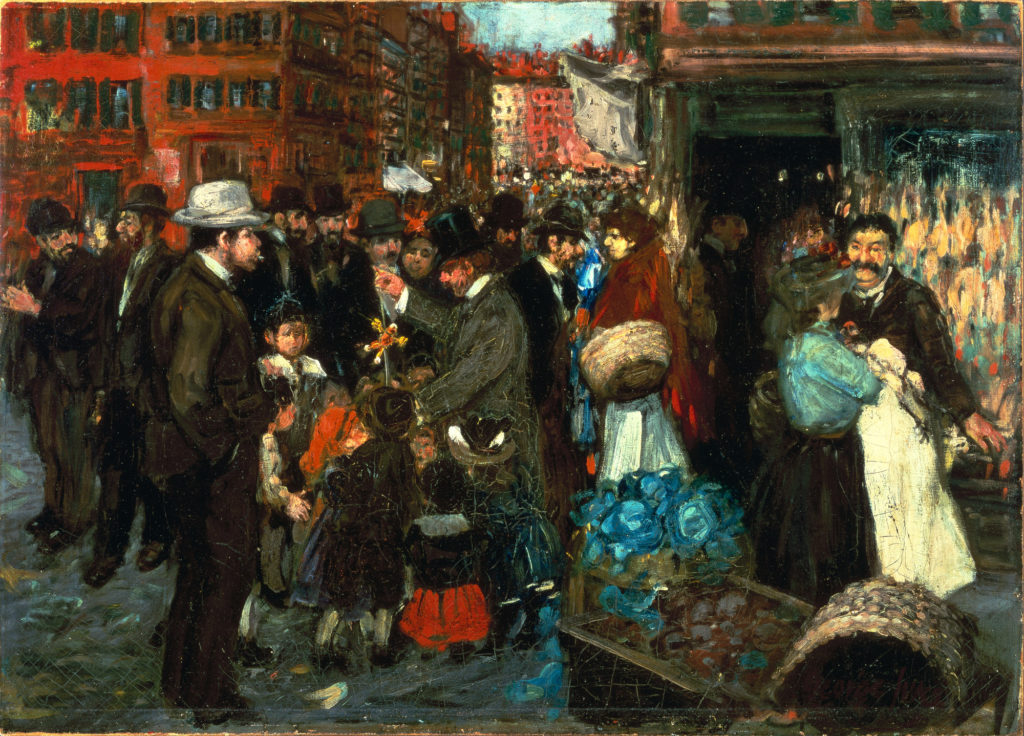
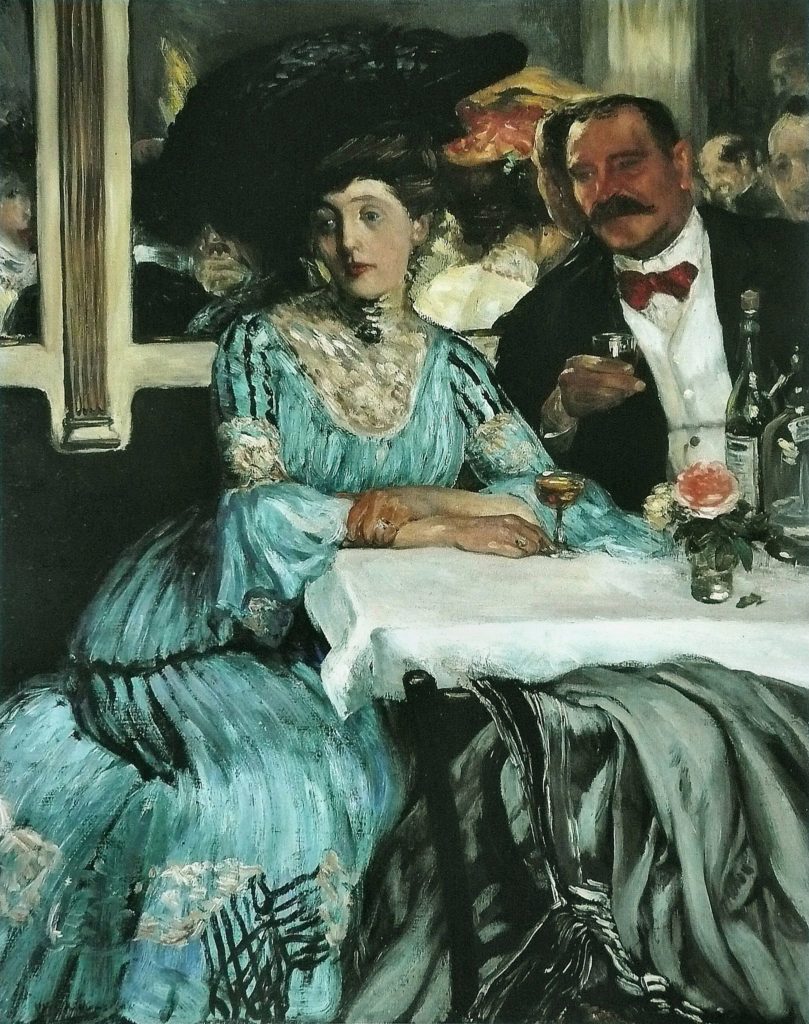
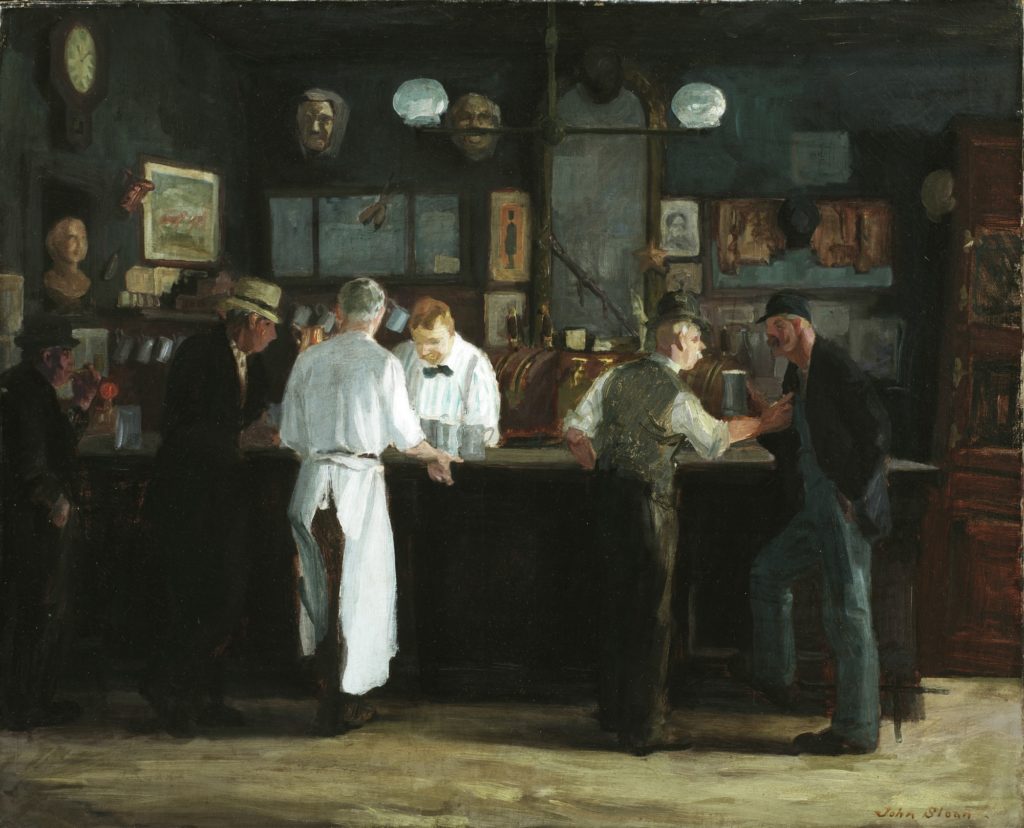
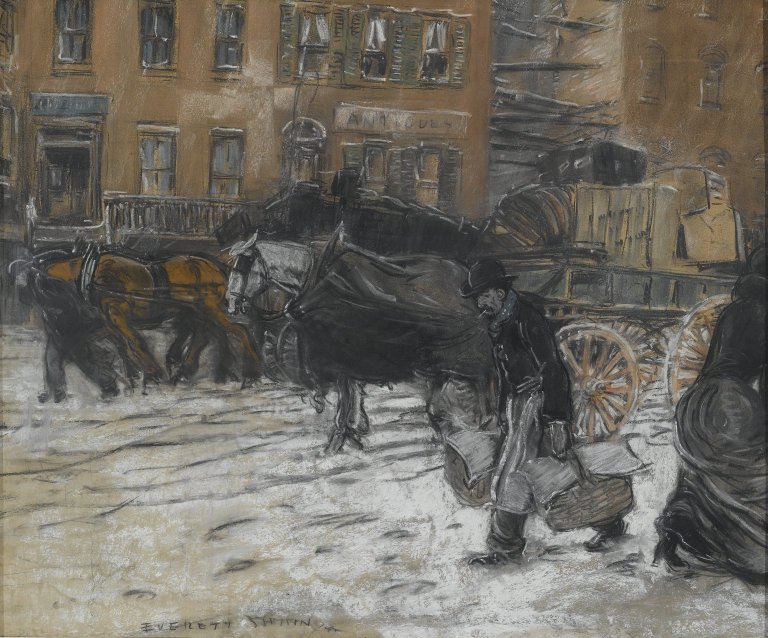
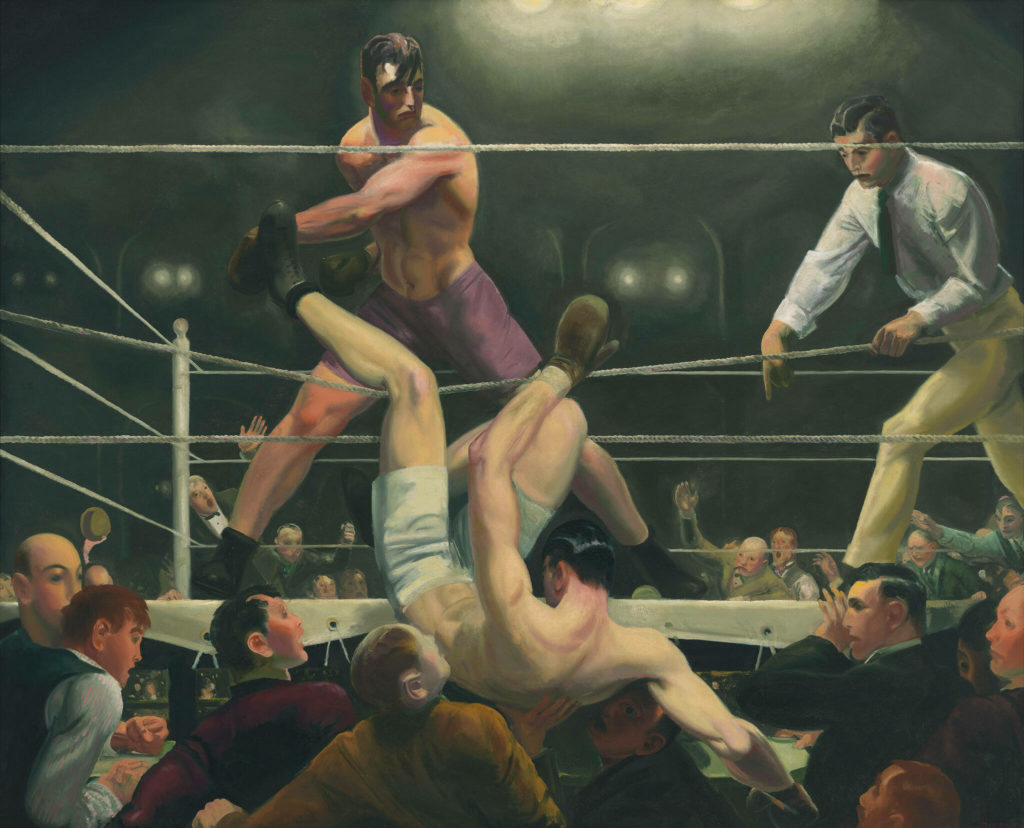
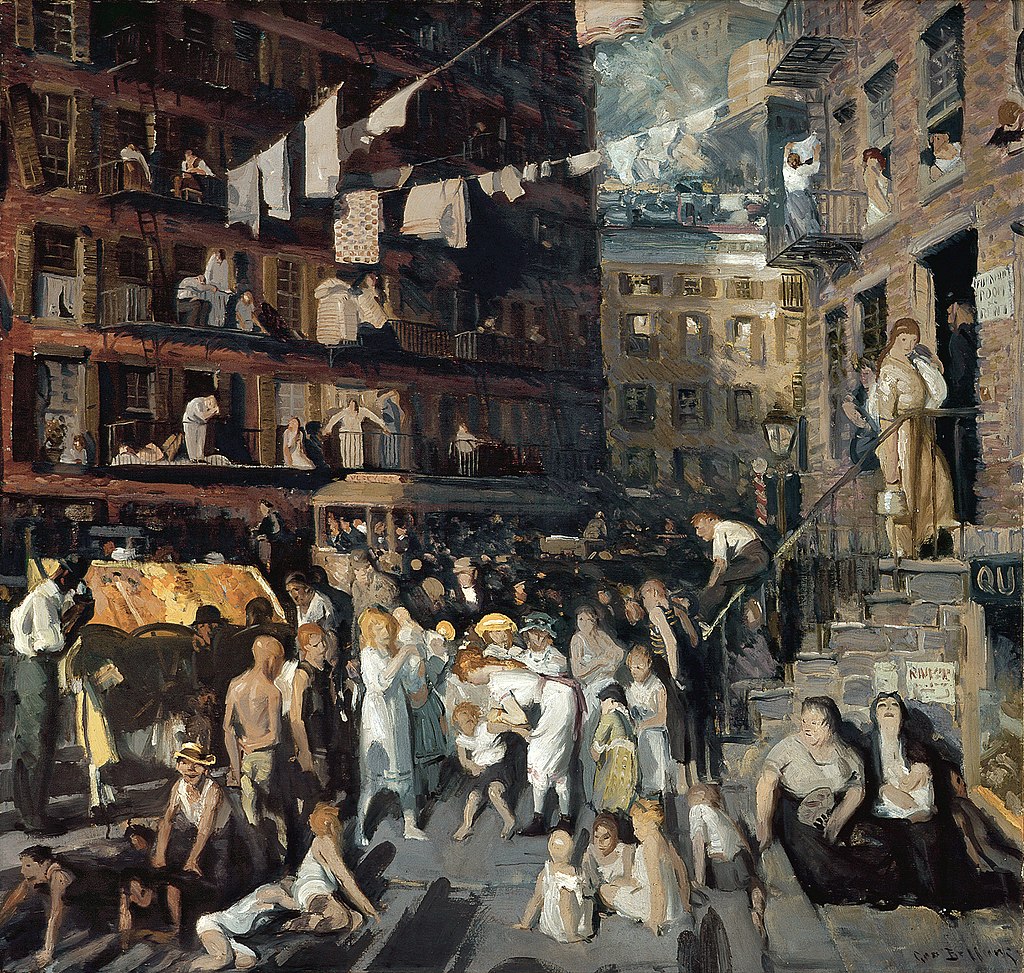
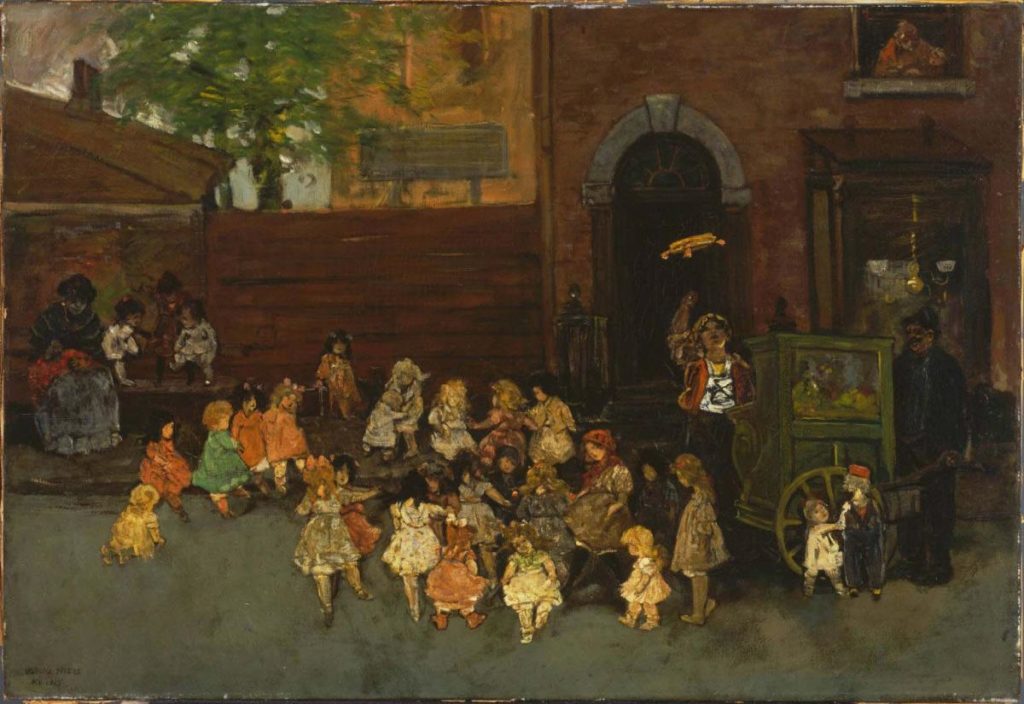
Beginning of the Ashcan School
Ashcan School is a term that brings together different tendencies in painting, artists clearly politically profiled and those who were not, bringing a wide range of topics in the style of urban realism, ranging from scenes of everyday life of marginalized groups to portraits of New York high society members. Robert Henri stands out as a central figure in the development of this movement. His Parisian experience as well as the successful status of a mentor he had among several artists imposed him as an authority in creating a new artistic sensibility of so-called urban realism. His credo— “art for life’s sake,” rather than “art for art’s sake” summarizes the notion of the essence of painting by Ashcan artists. Henri valued the relationship between art and life through the truth that was reflected in the uncompromising transfer of city life to the canvas. Guided by this idea, Ashcan School painters searched for a raw vision of reality, painting ports, bars, snow-covered streets, crowded tenements etc.
Robert Henri’s connections with four so-called Philadelphia illustrators — William James Glackens, George Luks, Everett Shinn, and John Sloan — formed the basis for the movement’s development. The transfer of these artists to New York between 1896 and 1904 brought them together both in terms of exhibiting and the topics they worked on. These five were the first generation of the Ashcan School artists, while the second consisted of Henri’s students from the New York phase, among whom George Bellows stands out as the most successful.
Members of this group have exhibited at many important New York exhibitions from the Exhibition at the National Arts Club in 1904 to the famous exhibition of The Eight at Macbeth Galleries in 1908, the Exhibition of Independent Artists in 1910, and finally at the key exhibition for American modernism The Armory Show in 1913.
The Eight
Very often, the work of The Eight and Ashcan School is connected, which is not strange considering that five of the eight painters of The Eight were Ashcan School artists. These were Robert Henri, John Sloan, William Glackens, George Luks, and Everett Shinn. The remaining three, Arthur B. Davies, Ernest Lawson, and Maurice Prendergast, have completely different painting poetics than the one nurtured by the Ashcan School. The only exhibition organized by this group was at the Macbeth Galleries in New York in 1908. This exhibition was a huge success. It was created as a kind of response to the strict and rigorous criteria of the National Academy of Design. Unburdened by academic canons, these artists spread their protest in the form of an exhibition throughout the country. After New York, the exhibition toured Chicago, Toledo, Cincinnati, Indianapolis, Pittsburgh, Bridgeport, and Newark. The success of this exhibition was reflected in the greater visibility that enabled the artists of Ashcan School to sell more paintings as well as to acquaint the general public with their artwork.
Urban Realism of the Ashcan School artists
Urban realism implies painting that brought credible scenes of the life of an underprivileged part of the population in a quickly transforming city.
The formal educational experience that the first generation of Ashcan painters gained at the Pennsylvania Academy of Fine Arts in Philadelphia was under the mentorship of Thomas Anshutz. The achievements of realistic painting that they became acquainted with served as the basis for a later more radical approach. Also, the Paris experience that Henri gained at the Académie Julian generated new freer tendencies in the understanding of realism.
In terms of Ashcan style, the painters relied on a dark palette and expressive and lively brushwork that we can trace all the way back to Honore Daumier. In terms of the composition of the painting, the Ashcan painters relied, among others, on Edouard Manet and Edgar Degas.
The urban realism of the Ashcan School was a chronicle of the accelerated transformation of New York. This transformation took place in the field of industrialization, new urban solutions as well as in the field of major demographic changes. Numerous immigrants from Europe made up the new urban population, whose everyday life was often the inspiration for the work of Ashcan painters. Scenes with crowds of newly arrived immigrants, scenes with dock workers or scenes with prostitutes, street kids, alcoholics bring the naked cruelty of life in the big city. Although preoccupied with topics concerning the lives of working class people, Ashcan painters did not live in poverty themselves. Unequivocally close to leftist ideas, these artists did not aim to send a political message with their work, nor was their goal in engaging in a revolutionary context. The New York reality in the Lower East Side and the Bowery was as they saw it and conveyed it in the medium of painting.
The Armory Show and the creation of the Whitney Museum of American Art
Among the founders of the Association of American Painters and Sculptors (AAPS) were Ashcan painters William J. Glackens, Ernest Lawson and George Luks. AAPS hosted a huge exhibition on February 17th 1913. The Armory Show was the key event for the development of modern American art. This exhibition opened at the 69th Regiment Armory in New York City. Later, this exhibition was organized at the Art Institute of Chicago and then at The Copley Society of Art in Boston. The Armory Show exhibited nearly 1,300 paintings, drawings, prints, and sculptures from the studios of both European and American modern artists. This exhibition presented to the American public important early modernist artworks that belonged to Impressionism, Divisionism, Pointillism, as well as later works of Primitivism, Fauvism and Cubism. This exhibition is interpreted as a turning point in the development of American modernism, which started on the path of a more radical Avant-garde experiment on the experience of Cubism and Futurism. For the new visual expression of the European Avant-garde that conquered the American institutions, Ashcan painting became anachronistic.
Crucial to the institutionalization of the Ashcan group’s art was Gertrude Vanderbilt Whitney’s collection. This artist and collector has been following and helping the work of this art group for many years. In 1914, Gertrude Vanderbilt Whitney founded her Studio in Greenwich Village, which became an important place for the presentation of modern art. In 1929, her collection consisted of more than 500 works of American art, she offered the collection to The Metropolitan Museum of Art but this institution refused to exhibit it. After that, Vanderbilt Whitney founded the Whitney Museum of American Art, which is still one of the most important points for researching American art.
Notable Artists
- Robert Henry (1865–1929)
- William James Glackens (1870–1938)
- George Luks (1866–1933)
- Everett Shinn (1876–1953)
- John Sloan (1871–1951)
- George Bellows (1882–1925)
- Jerome Myers (1867–1940)
Related Art terms
- Modern Art
- Realism
- American Modernism
- The Armory show
